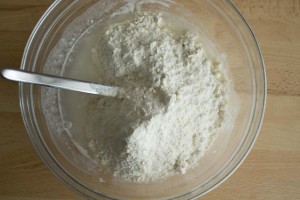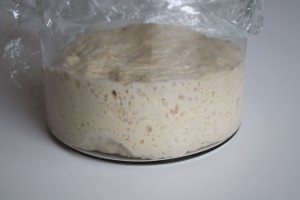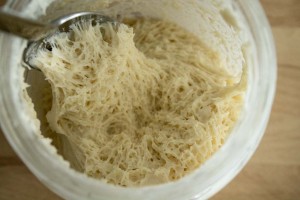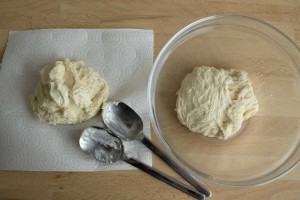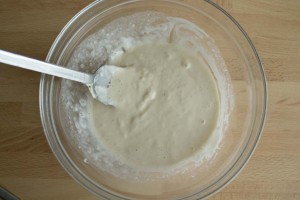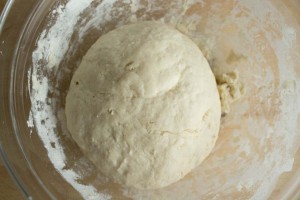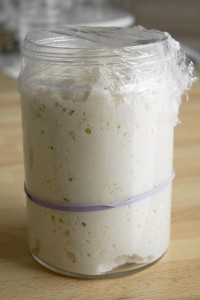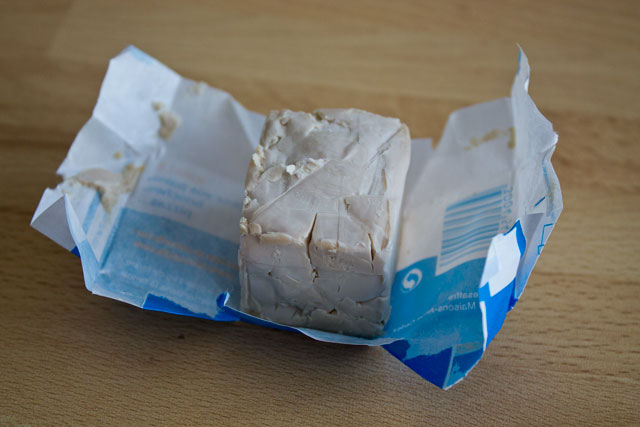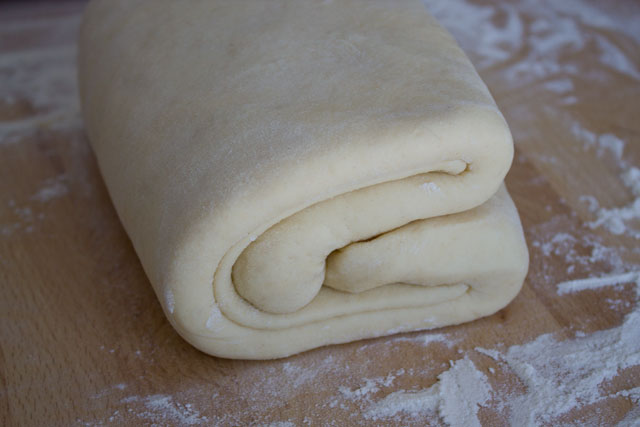How to make and use the sourdough starter (Chef)
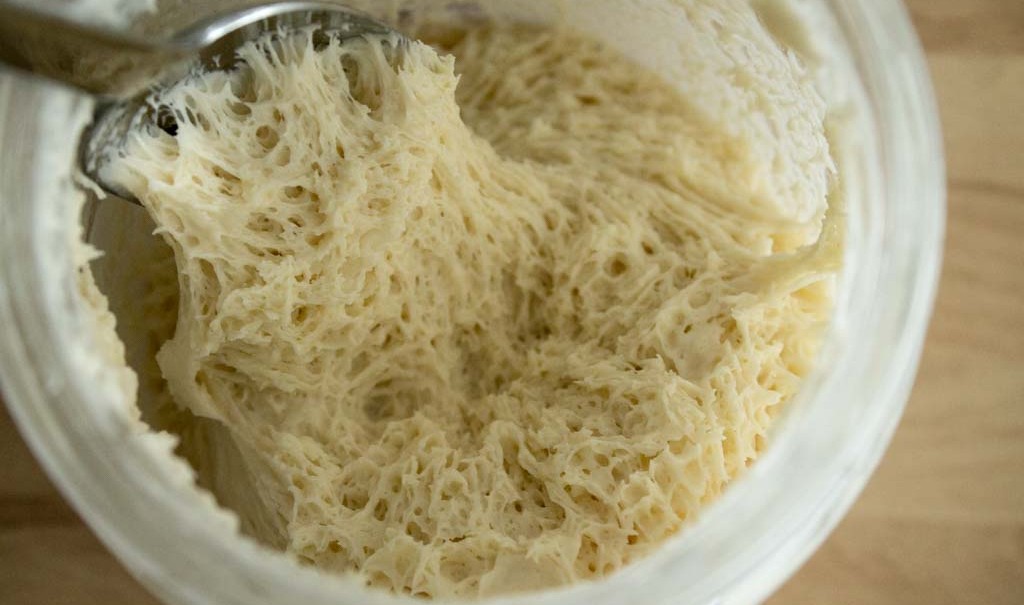
Watch out, long, technical post ahead! But totally worth a read: I tried to summarize here everything that I’ve learnt so far on the legendary sourdough starter, also called “chef” (or “levain” in French). So let’s start…
In a nutshell
The sourdough starter is a home made, all-natural equivalent of yeast. Except it is much better, because it can provide a better aroma, a longer shelf life and a stronger rise in baked goods.
What is the sourdough starter?
- It is a dough, simply made of flour and water
- It is sour, so its pH is acid.
- With time, it develops a balanced, stable culture of bacteria (lactobacilli) which produce lactic acid, fundamental to start a fermentation
A sourdough starter is therefore used to leaven doughs and, exactly like yeast, it is alive: this means that it can starve and die, so once you make your own sourdough, you need to “feed” it regularly. Like a pet.
To feed it, or said more properly “refresh it”, you just need to replace a part of the sourdough with new flour and water. To keep the sourdough alive, you must perform a refreshment at least once a week. For some this might be a big effort, so think wisely before embarking for this “adventure” (but trust me, it’s totally worth it!).
How to make the sourdough starter
- Make a dough with flour and water (detailed recipe below)
- Leave it covered with plastic wrap for 24-48 hours at room temperature until it doubles in size (yes it will!)
- Proceed with the first refreshment: get a part of the sourdough and mix it with more water and flour
- Same as step 2, for 24 hours
- Repeat this procedure every day for 2 weeks: at this stage, the sourdough should be able to triple in size in around 4 hours
- Now when the sourdough has tripled in size, you can store it in the fridge in a glass container for maximum 7-8 days
A good (active) sourdough has a pale grey color and despite its name, it should have a fresh yeasty smell (sometimes a bit astringent but not too much).
It is normal if the smell is not very pleasant in the early stages, but after the first two weeks it definitely should NOT smell awful, nor like acetone, nor like alcohol.
How to keep the sourdough alive
Refreshments are fundamental to keep the sourdough alive and you need to perform them:
- At least once every 24 hours if you store the sourdough at room temperature
- At least once every 7-8 days if you store the sourdough in the fridge
Waiting too much to perform a refreshment will have a negative impact on the sourdough:
- It will be weaker: the bacteria will start dying in the acidity they created, resulting in less rise in doughs
- It will become unbalanced and might start to stink.
If you notice your sourdough is getting weaker, just refresh it (and let it rest for 24 hours) a few times. As easy as that!
Needless to say that if your sourdough starts smelling like acetone or develops mold, it is time to throw it away and start from scratch.
How to refresh the sourdough
The basic ingredients of the sourdough are flour and water. Evey time you refresh the dough, you will have to take a part of the existing sourdough and mix it with flour and water (the procedure is detailed below). The proportions of these last two ingredients depend on the type of sourdough you want to get:
- Solid: with a ratio of 2:2:1 (e.g. 200g sourdough + 200g flour + 100g water)
- Liquid: with a ratio of 1:1:1 (e.g. 150g sourdough + 150g flour + 150g water)
I’ve only experimented with the solid one so far, so I can’t give you many tips on the liquid one. For simplicity, in this article, I will only discuss the solid sourdough.
The “waste”, aka the part of the sourdough that you replace at every refreshment, has to be discarded in the first two weeks. After that, though, you can definitely use it for some specific recipes that don’t require a strong leavening action: breadsticks, a simple focaccia, etc… (don’t even think about bread, pizza or panettone)!
Give me the science: how can flour and water magically make doughs rise?
This is a simplified version of what happens in your sourdough. I’m not a chemist, so forgive any inaccuracies. 🙂
Flour naturally contains a variety of yeasts and bacterial spores. When flour gets in contact with water, an enzyme breaks the starch into different types of sugars, which are the perfect food for the bacteria in the flour. Maltose is one of the sugars, but bacteria can’t metabolize it (i.e. “eat it”) so they ferment it. The byproducts of this process are metabolised by the yeast which produces carbon dioxide gas (CO2), leavening the dough (Source: Wikipedia).
To make it simple: bacteria and yeast eat sugars and produce gas and ethanol (which will evaporate during baking).
Leaving bacteria in the dough without “supervision” will cause the pH to become very acid and unstable (and toxic!). The sourdough might develop molds or simply get a pungent alcohol-like smell.
To avoid this, regular sourdough refreshments are needed to Darwinianly select the “best bacteria” and keep the culture balanced.
The benefits of the sourdough starter
So why should you use the sourdough starter, you ask…
- It requires a longer fermentation time: the result is a product that will have a longer shelf life (sourdough bread will stale later compared with a normal yeast bread).
- The bacteria and yeast in the sourdough “predigest” the starches of the flour, making it more easily digestible for us
- The longer fermentation time helps breaking down the gluten protein, making it more digestible
- The acetic acid produced in the long fermentation helps preserve the bread by inhibiting the growth of mold
- Simply, baked goods will taste even better than with yeast. Sourdough products all have a quite distinctive aroma and after some experiments you’ll start appreciating it more and more.
As a consequence of point 1), using a sourdough is good to make any “yeast” product, but it is particularly useful in preparations that require a very long fermentation and shelf life.
The Italian panettone is a good example: it is a rich Christmas dessert that can be consumed over several days, and can be baked many days in advance; as unbelievable as it sounds, a good panettone can remain soft for about one month (you start feeling frustrated about your average bread that gets immediately stale at the end of the day, uh?). 🙂
How to use the sourdough
When I need to bake something that requires yeast, I usually proceed in this way:
- Remove the sourdough from the fridge
- Wait for at least 1 hour so that it warms up to room temperature
- Refresh it once and let it triple in volume: it must take around 4 hours (any minute of delay will result in three minutes of delay in the final product rise). If it takes way more than 4 hours, perform another refreshment
- Optional: if you need to bake a complex product requiring a very long rise (e.g. panettone), you need to refresh the sourdough 3 times in total before starting your recipe
- Get the amount of sourdough needed for the recipe
- Keep the rest of the sourdough and add water and flour so to match the original weight; let it triple in volume, then store it
Yes but how much sourdough is needed in my recipe?
There is no clear rule to convert yeast vs sourdough. A rule-of-thumb is: use between 15% and 25% of the weight of the flour in the recipe. For example, if the recipe calls for 1kg of flour, you can use between 150g and 250g. You then have to remove a bit of flour and water: and I mean “a bit”, not all of it! There is no linear correlation between the flour/water that you need to remove from the recipe and the weight of the sourdough that you are using. With experience you’ll learn how to adjust your recipes.
What about rising times?
I still haven’t found the correct timing, as my experiments turned out to be underproofed. For sure the total fermentation time is way longer than with yeast. if you can be done in 2 hours with yeast, count 8 (4h for the first fermentation + 4h for proofing) for sourdough. With experience you’ll learn how long the fermentation takes.
Tips to make and refresh a sourdough
Home made sourdough can be very fussy, especially at the beginning. So here are the tips (read: “mandatory instructions without which your sourdough is most likely bound to die“) for a healthy, strong sourdough:
- Anything that comes in contact with the sourdough must not be washed with soap or other chemical products or it must be thoroughly rinsed. This includes: glass bowls, glass containers, spoons, mixing bowls, mixer attachments
- Avoid nail polish and perfume on your arms
- It is advisable to use mineral water only and good-quality flour (where “good-quality” either means organic/bio or anyway without additives that could destroy the bacteria)
- Perform refreshment in a glass bowl, avoid plastic
- You can use a teaspoon of honey in the first weeks and when the sourdough seems weak, in order to boost its strength
- Let the sourdough triple in volume at room temperature (ideally between 25° and 28° C) – I leave the sourdough in my slightly warm, switched-off oven with the door closed
- To store the sourdough, use tall glass containers that are able to hold three times the original volume
- When you store the sourdough, make sure that its container is covered in plastic wrap (or with a lid) and that there are no strong-smelling products around
If the sourdough doesn’t rise, something might be wrong, but don’t despair: if the smell is not completely off (alcohol or acetone), make a refreshment and wait for 24 more hours!
And now, time for the recipe! How many times did I write “sourdough”, by the way? 🙂
Sourdough starter (Chef)
Ingredients
On the first day
| 200g | Flour |
| 100g | Water |
| 1 teaspoon | Acacia honey (optional) |
For each refreshment
| 200g | Sourdough (fully risen, room temperature) |
| 100g | Water |
| 220g | Flour |
| 1 teaspoon | Acacia honey (optional) |
Directions
On the first day
For each refreshment
Note
If it takes more than 4 hours to triple in volume, the sourdough is not mature enough yet: store it at room temperatures until the day after and then perform another refreshment. A sourdough should take around 2 weeks to become mature.

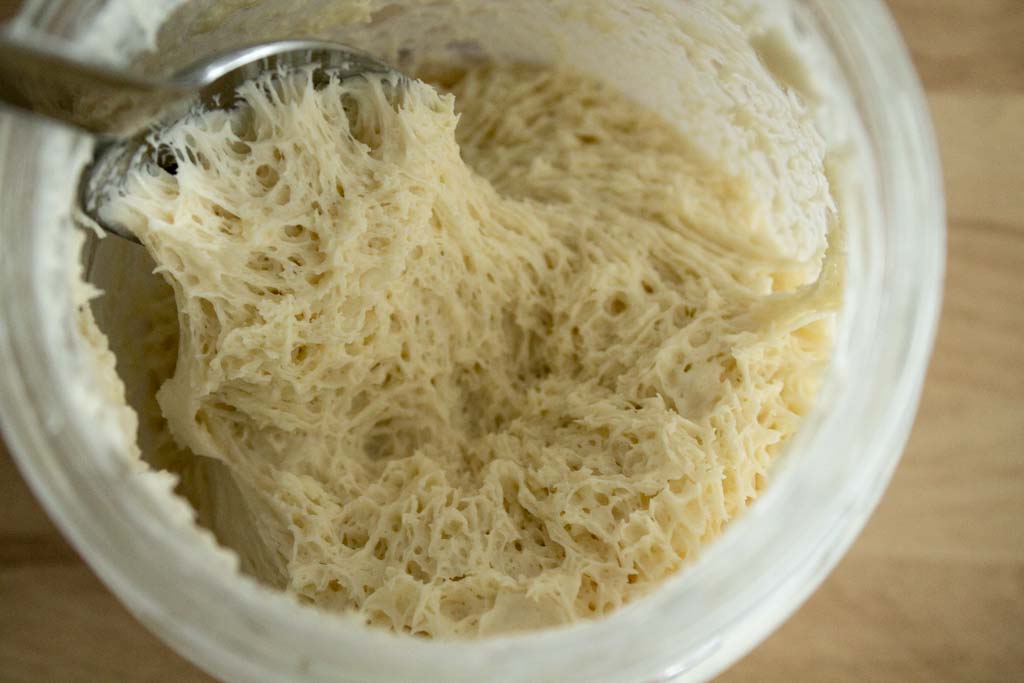
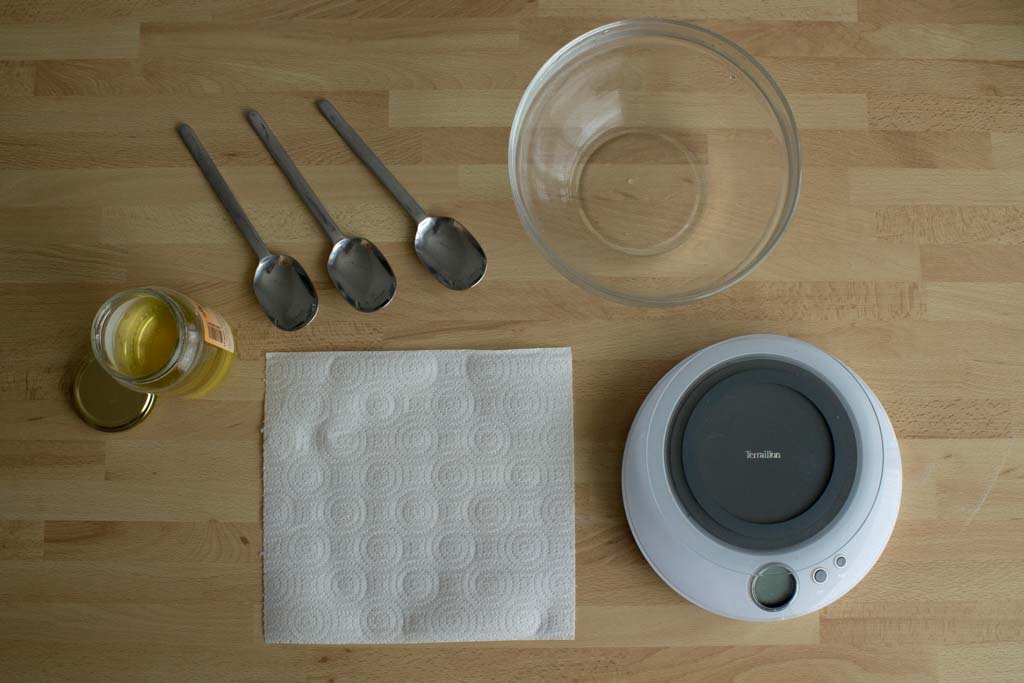
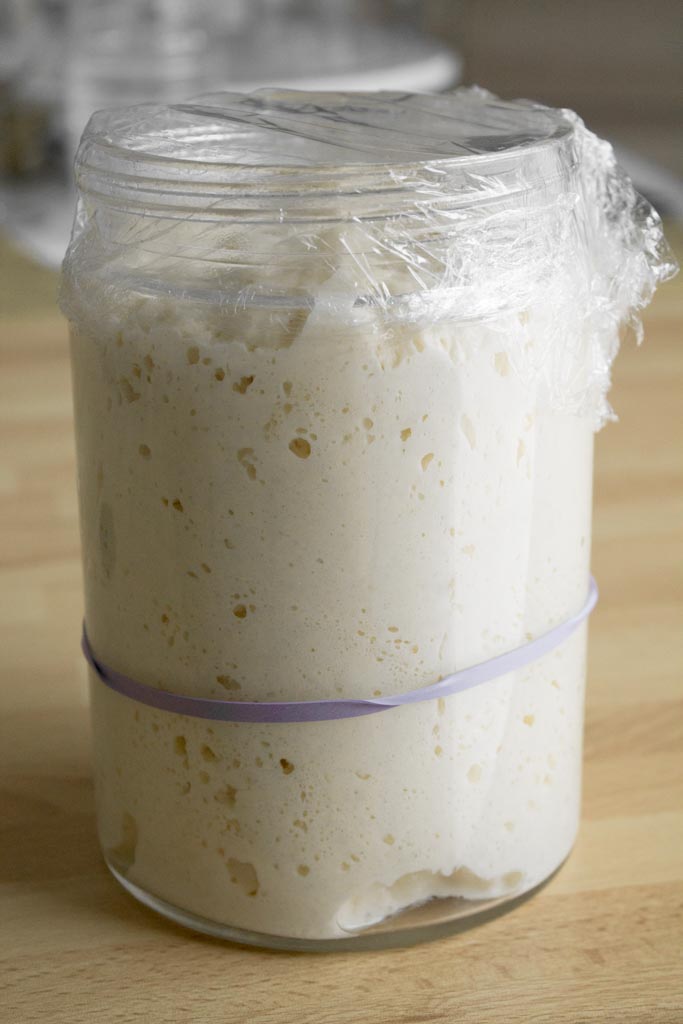
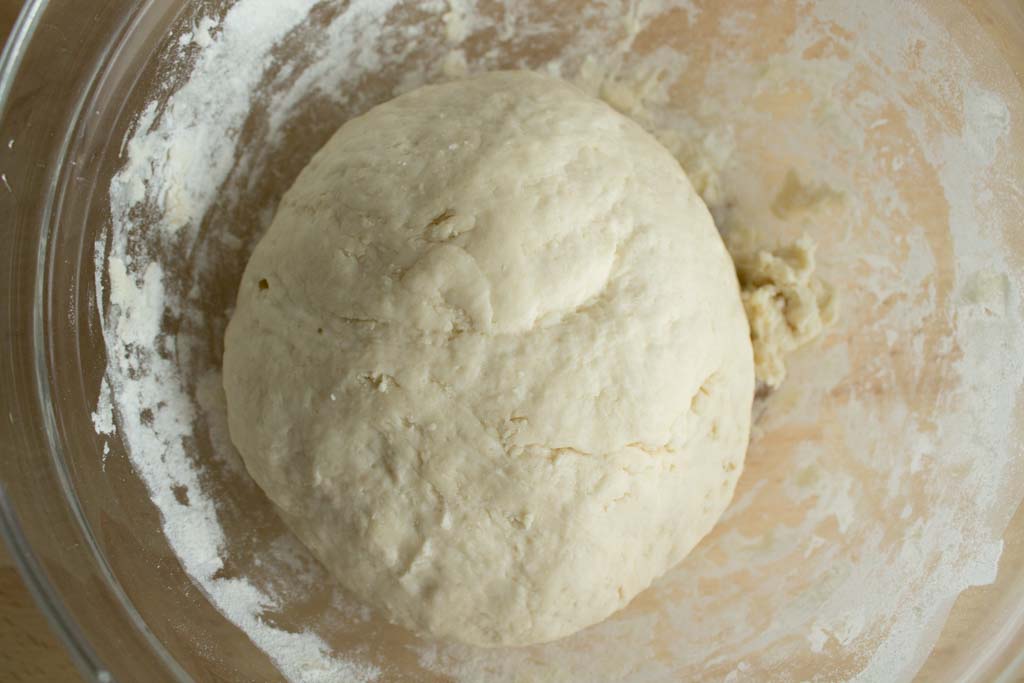
 Print recipe
Print recipe